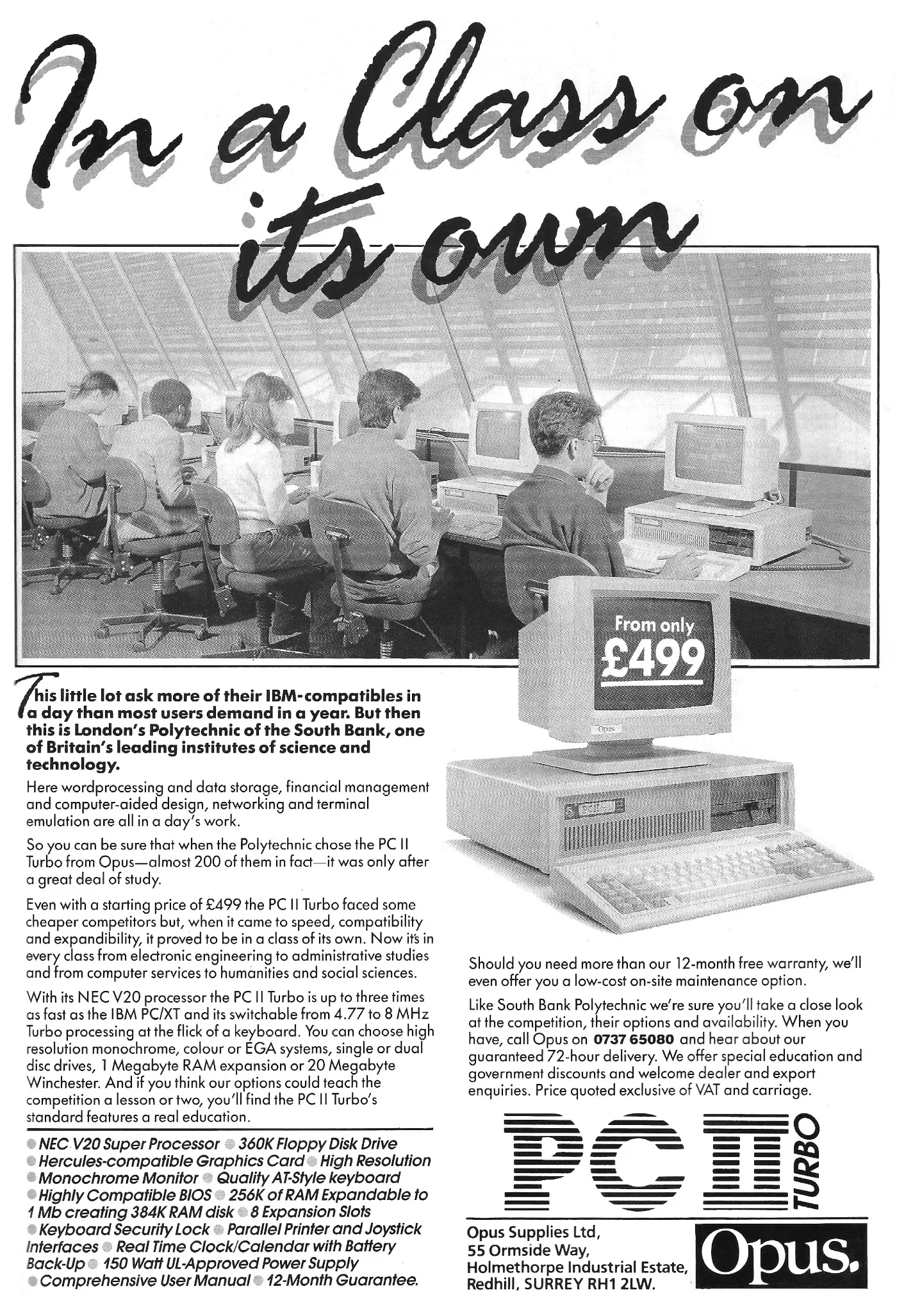
Opus Advert - April 1987
From Personal Computer World

In a class on its own: Opus PCII
Opus was another of those companies, like Memotech, that had started out as a technology supplies company, selling things like the Discovery system for the Spectrum, which combined a 3.5" disk drive and additional interfaces with a monitor output and power supply[1].

Martin Breffit of Opus (right) shakes hands with Andy Roberts of Skegness Grammar, the first school to opt out of Local Authority control. © Popular Computing Weekly 2nd March 1989The company then saw the value of the IBM PC bandwagon and jumped on, becoming one of the most successful UK clone manufacturers for a while.
It was helped by the Education Act of 1988, which introduced "market capitalism", competition for schools funding and, crucially for micro companies, the chance for schools to opt out of local authority control and its restrictive purchasing guidelines.
Opus considered itself "well ingrained in the higher education and university market", and made the most of it when it signed a sponsorship deal with Skegness Grammar School - the first to opt out - which gave the school a new computer centre equipped with a total of twelve of its 286-based PC IV's.
Meanwhile, the Opus PC II of the advert was a fairly generic IBM compatible, although it used the unusual NEC V20 CPU instead of an Intel 8088 (or 80186 with which it was instruction-set-compatible[2]).
Retailing from £575 (£2,100 in 2026 money), the Opus range of PCs appeared to do well in academia, at least judging by this advert's mention of an order for 200 machines from London Poly and their widespread use at Plymouth Polytechnic[3].
The author also purchased several Opus machines (PC III, IV and V's) for work during the late 80s and early 1990s, and the inclusion of this advert is a nod to that.
Date created: 31 July 2014
Last updated: 16 July 2025
Hint: use left and right cursor keys to navigate between adverts.
Sources
Text and otherwise-uncredited photos © nosher.net 2026. Dollar/GBP conversions, where used, assume $1.50 to £1. "Now" prices are calculated dynamically using average RPI per year.